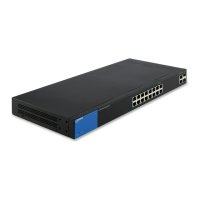204
•
I
Pv6 Address Type—Select Link Local or Global as the type of IPv6 address to
enter as the destination IP address.
o
Link Local—The IPv6 address uniquely identifies hosts on a single network
link. A link local address has a prefix of FE80, is not routable, and can be
used for communication only on the local network. Only one link loca
l
address is supported. If a link local address exists on the interface, this
e
ntry replaces the address in the configuration.
o
Global—The IPv6 address is a global Unicast IPV6 type that is visible and
reachable from other networks.
o
Interface—If the IPv6 address type is Link Local, select from where it is
received.
•
Target IP Address—Address of the device to be pinged. Whether this is an
IP
a
ddress or host name depends on the Host Definition.
•
Target Name—Host name of the device to be pinged. Whether this is an IP address
or host name depends on the Host Definition.
•
Ping Interval—Length of time the system waits between ping packets. Ping is
repeated the number of times configured in the Number of Pings field, whether th
e
p
ing succeeds or not. Choose to use the default interval or specify your own value.
•
Number of Pings—The number of times the ping operation is performed. Choose t
o
use the default or specify your own value.
3. Click Start to ping the host. The ping status appears and another message is added to th
e
l
ist of messages, indicating the result of the ping operation.
4. View the results of ping in the Ping Result section of the page:
•
Result—Success or fail of ping.
•
Number of Pings Sent—Numbers of responses sent.
•
Number of Ping Responses Received—Numbers of responses received.
•
Packets Lost—Numbers of responses not received.
•
Minimum Round Trip Time—Minimum time passed between sending of packets and
reception of responses.
•
Maximum Round Trip Time—Maximum time passed between sending of packe
ts
and reception of responses.
•
Average Round Trip Time—Average time passed between sending of packets and
reception of responses.

